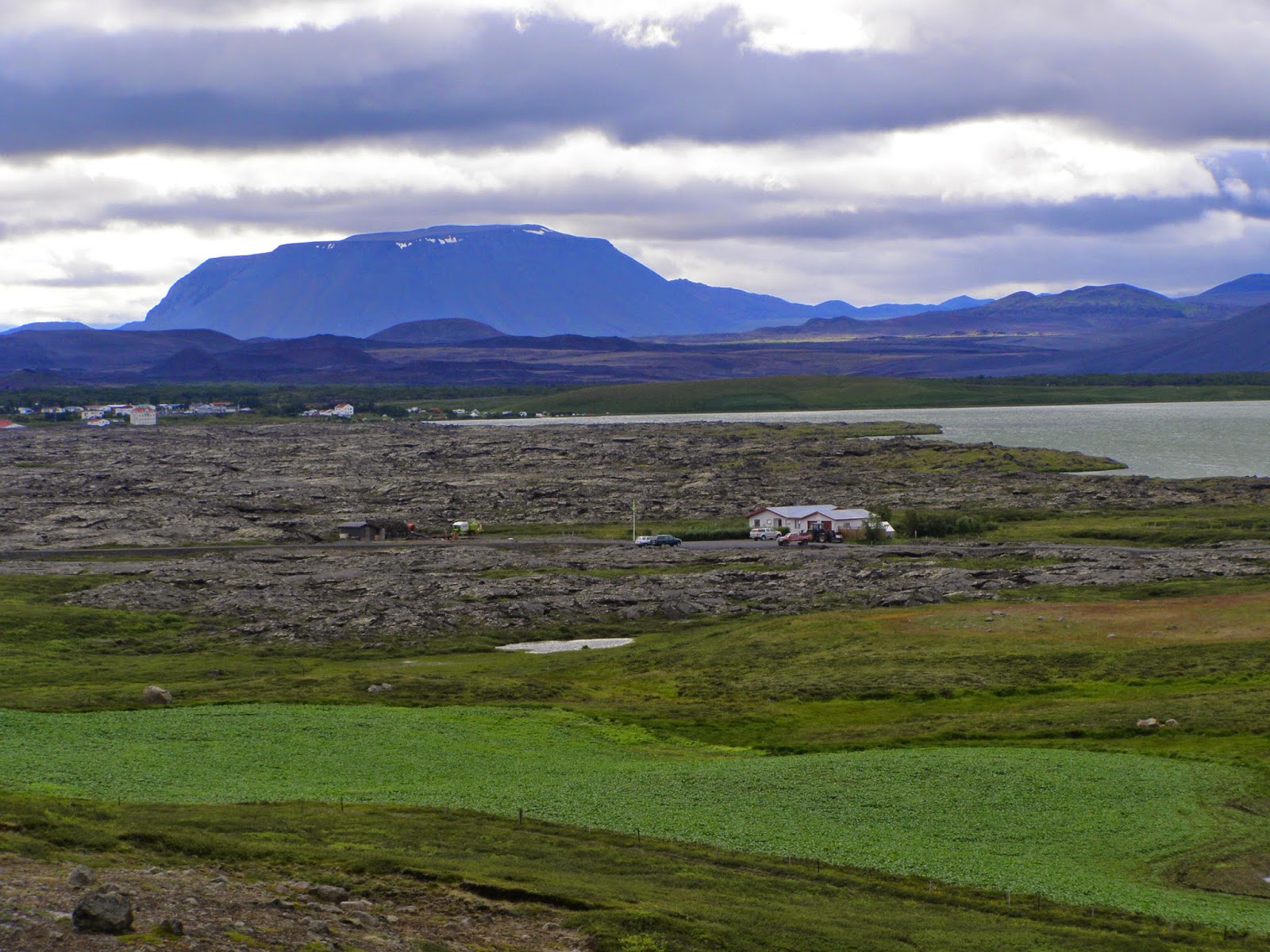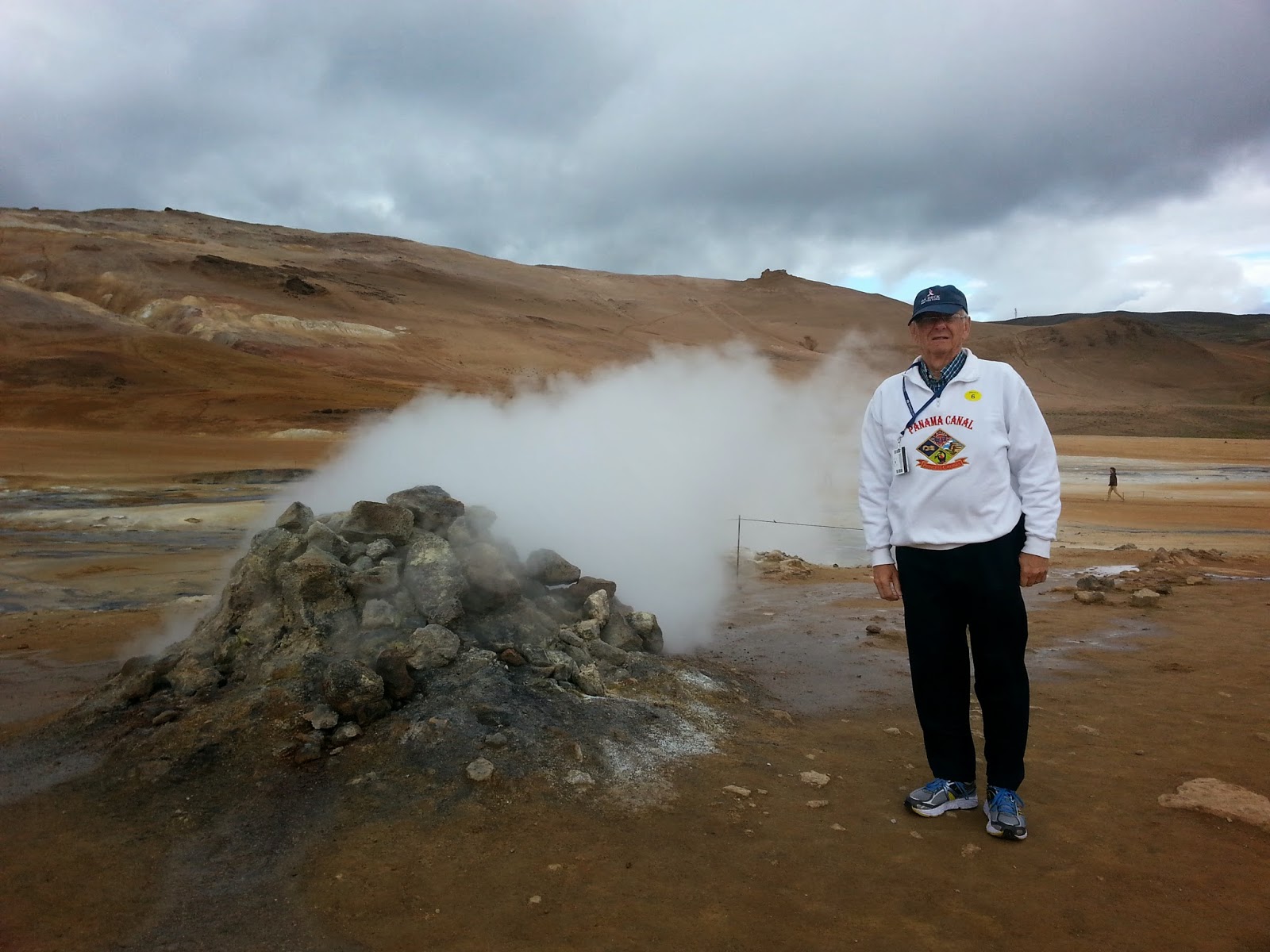Our tour was due to leave as soon as we docked and we'd cleared so we had to report to the lounge before we were even docked. Three bus loads of us were all eager to gather and begin We've discovered that they all want to be first to the bus so they all crowd the doorway to go when the signal is given. We ended up halfway back on our bus but with good window space to see. One of the problems with this kind of travel is pictures have to be taken through bus windows as it clips along the road - definitely a challenge.
Our first stop was on the mountain across from the ship so we could take pictures of it and see the city itself.
From there we climbed up and crossed over to the next valley where we saw far more green than snow. In fact, it was quite lush appearing. Again we observed lots of sheep along with some horses and cattle. Farm land and white covered rolls of hay were scattered about. Our guide told us that the farmers grow two full crops of hay during their growing season but this year are hoping to grow a third one.
The sheep are turned loose to run wild in the summer after the lambs are born and able to move about on their own. They are then rounded up each fall by the farmers of the district working together and bringing them all to a low stone fenced area and divided up by markings to return to the owners farm. It has to be quite a job finding them all as the area is vast with lots of stone and bushes to hide behind.
Icelandic horses and cows also enjoy some of the pasture land that is available. According to our guide horseback riding is quite popular with tourists. The cows provide for all of the dairy needs of the Icelanders.
One thing is for sure, all of the citizens must get lots and lots of physical exercise as even going from one house to another is often quite a trek with lots of ups and downs. Maybe that helps account for the fact that their average life expectancy is highest in the world. Exercise happens just getting through the day!!
One thing we've noticed is the number of tourists who camp either in tent or tiny trailers or motor homes. I suppose we were quick to notice that since we are full time RVers ourselves. But it is obviously a great way to see the countryside and truly enjoy its beauty.
Much of Iceland is covered with volcanic rock, ash, and hardened lava. One of the first things to grow on it is moss. In fact, biologists have identified over 600 varieties of moss. The affect is that the land looks lush and green even if it is not good solid farm land. There are several volcanoes on the island and evidence of the fact that one or another of them "blows" on the average of once every four years. For that reason many
residents have just given up farming and left the country or moved to the city.
Our tour took us to one of the hot spots on the island where we saw plenty of evidence of this volcanic activity including boiling mud "pots", steam coming out of rock outcroppings, and water that leaves behind colorful metal "stains" as well as just very forbidding looking land. We were warned before walking around to be very careful of where we stepped as a good deal of this land is just thin crust over hot pools and molten flows.
We then drove over to an area with several "false" craters created by lava flowing over water causing a steam eruption that formed them. This was next to a large lake that many fowl treat as their breeding ground.
Nearby was another area when lava and volcanic rock have created strange looking "structures" also carved out by a mixture of those things and water. It was referred to as the" black castles."
Waterfalls, cascades, lakes, rivers, and streams also dot the land. The Godafoss (foss = falls) is just a sample of some of the more dramatic ones in Iceland.
At the end of the day we returned to our ship and while we ate dinner, the ship began its journey toward our next destination on the western side of the island.

























No comments:
Post a Comment